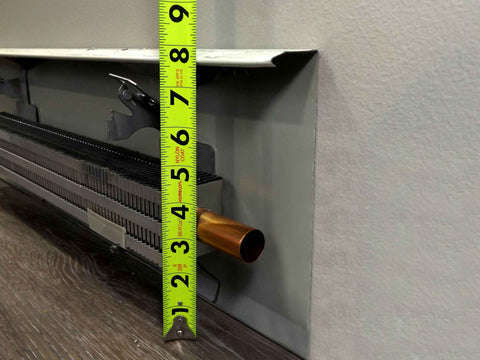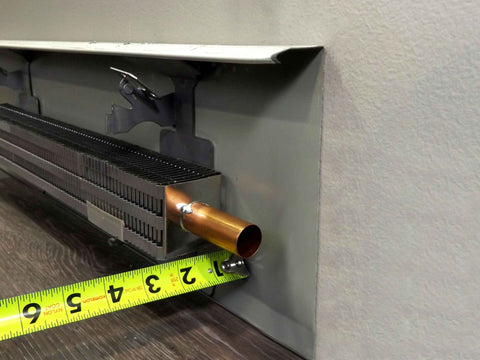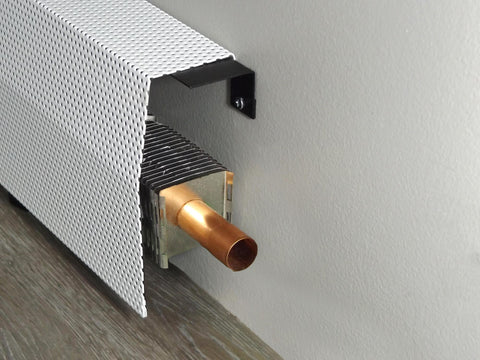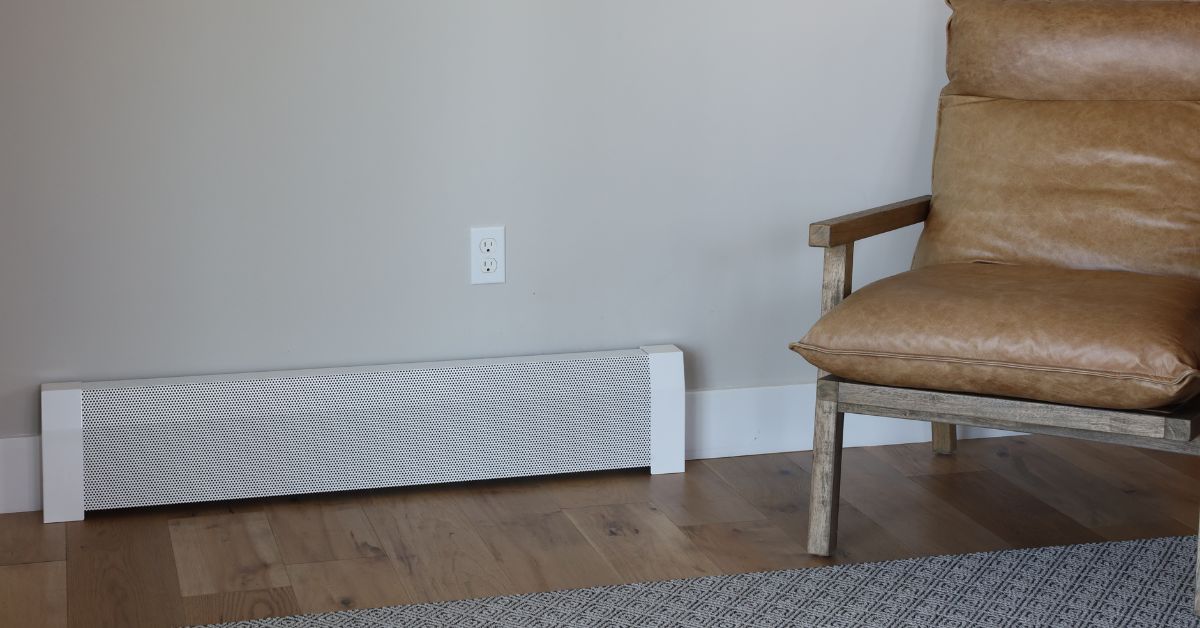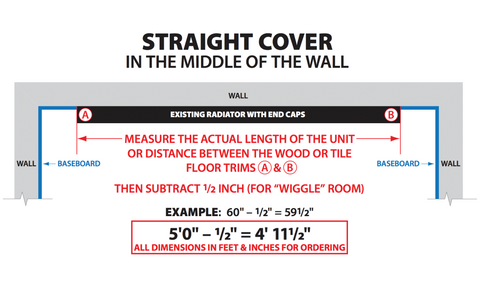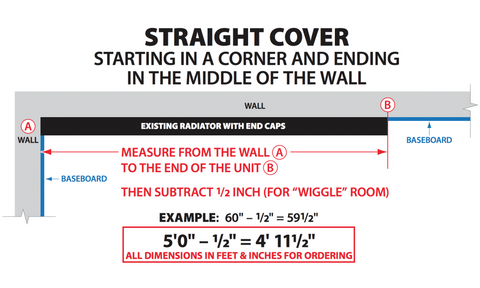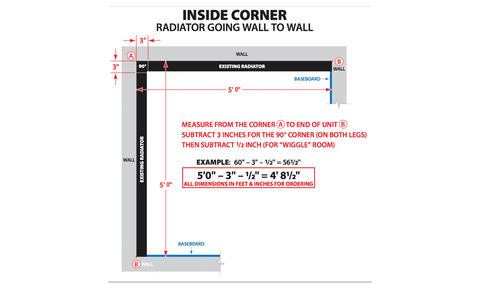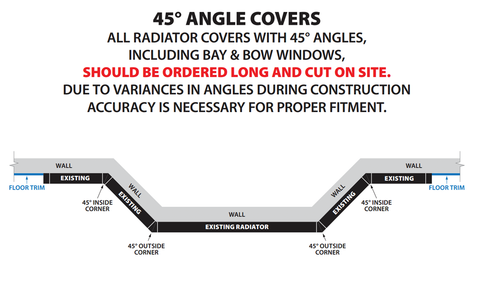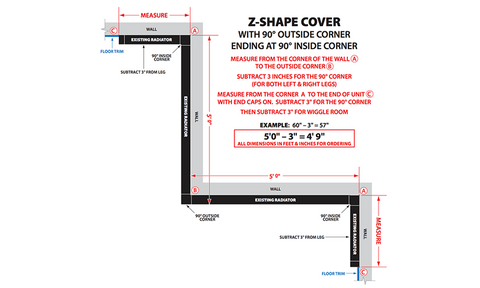Creating a modern home is about more than sleek furniture or minimalistic color palettes; it’s also about the details that have a big visual impact like your baseboard heating system. If you’ve ever felt like those bulky, outdated heater covers drag down the vibe of your space, you’re not alone.
Swapping them out for modern baseboard covers is a simple and cost-effective way to elevate your home’s style. In this blog, we’ll walk through how to achieve a modern aesthetic with baseboard covers, so your space feels as good as it looks.
Understanding the Role of Baseboard Covers in Design
Baseboard heaters are practical, but they’re not always pretty. Most original units come with standard metal covers that can show dents, scratches, or discoloration over time. These covers often don’t match updated interiors and can quickly make a freshly renovated room feel dated.
Baseboard covers are functional and become a key part of your home’s interior design. When chosen thoughtfully, they can seamlessly blend into your décor or enhance the overall aesthetics.
Modern baseboard covers are available in a variety of finishes, materials, and profiles. From matte white and brushed nickel to custom designs, they give homeowners and property managers the opportunity to refresh a space without replacing the heating unit itself. By treating your baseboard covers as a design element rather than an afterthought, you open the door to a cleaner, more cohesive aesthetic throughout your home.
Choosing Materials That Match Modern Interiors
Modern design is about clean lines, neutral tones, and purposeful use of materials. When updating your baseboard covers, consider materials that complement the rest of your space. Sleek, powder-coated aluminum and galvanized steel are two popular options that offer durability and style.
Aluminum covers are lightweight and corrosion-resistant, making them ideal for bathrooms, kitchens, or anywhere with high humidity. Their clean finish suits contemporary spaces with a minimalist edge.
Galvanized steel covers provide a slightly more industrial look. They’re heavier and built to last, often with customizable panels or grilles for added flair.
If you prefer something softer, painted wood covers can help by adding warmth and allowing you to blend Scandinavian and traditional design elements. Just make sure they’re sealed and safe for use with your heating system.
No matter the material you choose, aim for finishes that work with your home’s palette. White, black, and neutral metallics are versatile choices that keep your design timeless.
Installing Modern Covers for a Clean Look
Once you’ve picked out the right baseboard covers, installation is the next step. Luckily, many modern options are easy to install, making DIY-friendly upgrades a possibility. There’s no need to remove the heating element or hire a professional unless you want to.
Slip-on baseboard covers are especially popular because they can fit right over existing units. You’ll usually start by removing the old metal front and end caps, then simply slide the new cover into place. Some options snap in without screws, making the process fast and tool-free.
For homeowners and property managers tackling multiple rooms, installing decorative baseboard heater covers can happen over the span of a weekend and dramatically boost your home’s visual appeal. However, it’s essential to measure each unit correctly before purchasing. Even within the same home, dimensions can vary slightly, and a poor fit can ruin the desired effect.
When done right, the result is a streamlined, uniform look that enhances rather than distracts from your room’s design. And the best part? You’ll keep all the heating power and efficiency without sacrificing aesthetics.
Coordinating With Other Modern Design Elements
While baseboard covers are an essential home upgrade, they don’t exist in a vacuum. To really nail the modern look, think about how your new covers will coordinate with other elements in your space — like wall color, flooring, and furniture.
For example, if your room features light hardwood floors and white trim, a bright white baseboard cover will disappear beautifully into the background. In a darker, moodier space with deep wall colors or black fixtures, a matte black or brushed graphite cover can tie the room together in a subtle but intentional way.
You can also use baseboard covers as a visual cue to maintain horizontal lines in a space. Aligning furniture and trim with the top edge of the cover can help guide the eye and create a cohesive, layered look. In larger rooms, especially open-concept layouts, using the same style of baseboard cover throughout maintains consistency and visual flow.
And don’t forget the small details, specifically that your cover ends and corners should match and finish cleanly to avoid any awkward transitions. If you're working with an interior designer, include baseboard covers in your material palette to ensure every detail works together.
Long-Term Benefits for Homeowners and Property Managers
Beyond the immediate visual impact, upgrading baseboard covers offers long-term benefits, especially for property managers and homeowners who care about value and durability.
Modern baseboard covers often consist of higher-quality materials that resist rust, corrosion, and dents. That means fewer replacements down the line, and less maintenance. They’re also easier to clean — many have smooth, flat surfaces instead of ridged or perforated fronts that collect dust and debris.
For rental properties or homes going on the market, sleek baseboard covers can increase visual appeal for potential buyers or tenants. They’re a small investment that pays off with better first impressions and perceived care of the space.
Additionally, because these covers don’t interfere with the heater’s function, they maintain energy efficiency while improving style. You won’t have to worry about reduced airflow or overheating — just check that your chosen design complements the rating of your heating system.
In short, updating your baseboard covers is one of those rare projects that’s affordable, low-effort, and high-impact. It’s a win on every level, making it an ideal option for anyone looking to bring a modern aesthetic into their space.
Baseboard Covers: An Easy Way To Achieve a Cohesive Design
Achieving a modern aesthetic with baseboard covers doesn’t require a full home renovation. All you need is an eye for detail and a willingness to upgrade the basics. With the right materials, a simple installation process, and a focus on cohesive design, your baseboard heating can go from eyesore to asset.
Decorative baseboard heater covers offer a simple way to refresh your home’s look while keeping it functional and energy-efficient. Whether you’re a homeowner planning a style refresh or a property manager looking to boost a building's appeal, this upgrade can help you transform everyday utility into streamlined, modern design.
